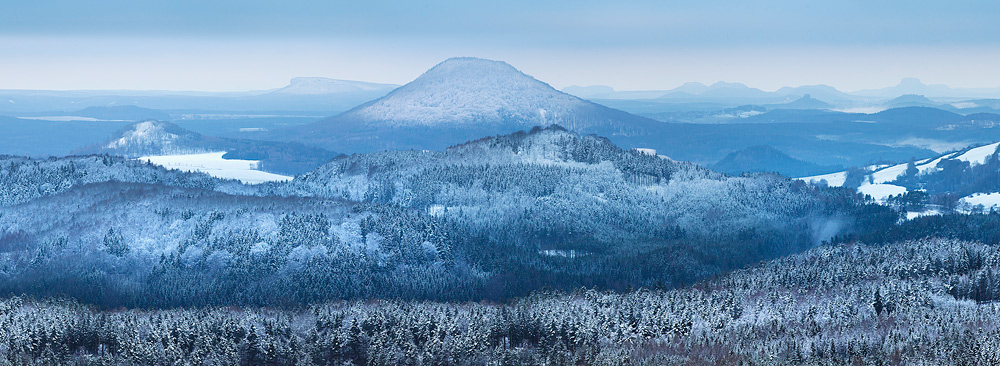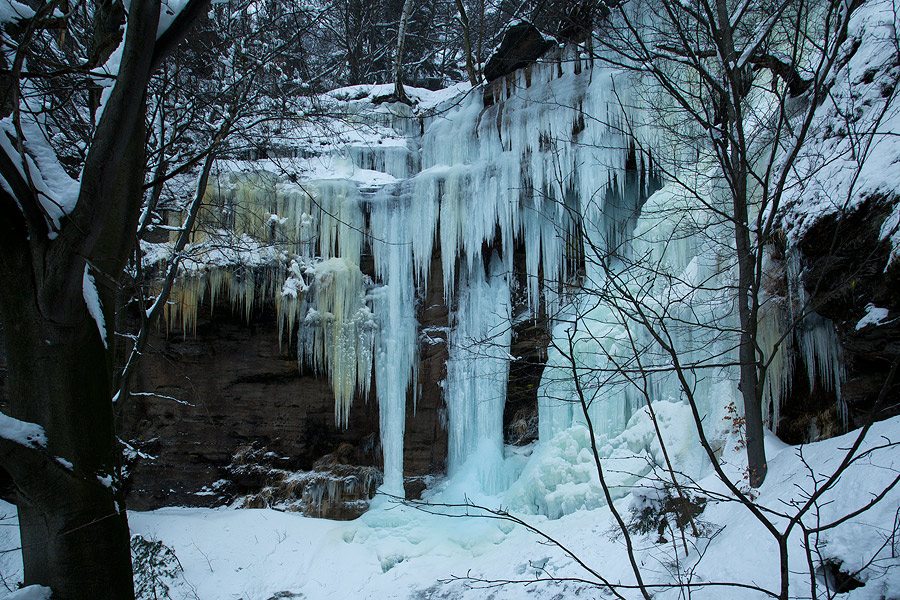The ecotron in Hoge Kempen National Park (BE) exposes large ecosystem samples (“mesocosms”) to highly controlled climate conditions, and monitors their response. © Photo S. Petrosillo
At international level
Climate change is one of the major drivers of biodiversity loss. It is a crucial issue that needs to be dealt with through international and European cooperation.
Climate policy has two objectives:
- Mitigation: mitigating climate change with low-carbon measures or by offsetting
- Adaptation: as climate change is already a visible phenomenon that will worsen, measures are needed to adapt to the new reality.
All too often, the links between biodiversity loss and climate change are not explored together to be solved together as they should be. Protected Areas can bring solutions to both crises which makes protected areas more important than ever.

Saxon-Bohemian Switzerland DE/CZ © V.Sojka
European Climate Law
The European Climate Law is an EU regulation that implements the European Green Deal regarding the goal for Europe’s economy and society to become climate-neutral by 2050. Climate neutrality means achieving net zero greenhouse gas emissions for EU countries as a whole. This should be achieved by cutting emissions, investing in green technologies and protecting the natural environment. In the Climate Law, there is also an intermediate target of reducing net greenhouse gas emissions by at least 55% by 2030.
In the Climate Law, the importance of maintenance and restoration of ecosystems as natural carbon sinks is acknowledged. Protected Areas act as natural solutions to this. This should be taken into account in the development of National Energy and Climate Plans (NECPs) that the Member States need to provide. These plans are assessed every five years in order to assess the progress of each Member State and the EU as a whole. Protected Areas should be as important tools in these plans.
European Climate Pact
The European Climate Pact is “a movement of people united around a common cause, each taking steps in their own worlds to build a more sustainable Europe for us all”. It was launched by the European Commission as part of the European Green Deal and to help to meet its goal for EU to be the first climate-neutral continent in the world by 2050. Protected Areas can and should be part of this process. For more information, visit the EU website.
NATURA 2000 & Climate Change
The European Union seized the issue on the links between climate change and biodiversity through a Guidelines on Climate Change and Natura 2000. The European Commission explored how to deal with the impact of climate change and on the management of Natura 2000 network of areas of high biodiversity value. Here is the “supplement” of the document.
To learn more about Natura2000, we invite you to visit the dedicated webpage!

Saxon-Bohemian Switzerland DE/CZ © V.Sojka
What is EUROPARC doing?
At EUROPARC Federation, we are committed to tackle the climate change crisis with our work in Protected Areas. EUROPARC aims to raise political awareness of the current challenges and to propose concrete solutions to fight against biodiversity loss and climate change.
Have a look at the policy and position papers EUROPARC has produced regarding climate change.
In addition, EUROPARC Spain launched a practical manual on Adaptation to Climate Change in Protected Areas for managers. This methodology will help you to include Climate Change Adaptation in planning and management of Protected Areas. Have a look at it!
EUROPARC participated in the project LIFE Natur’adapt that explored the impact of Climate Change to Protected Areas management and how Protected Areas can be also part of the solution.
